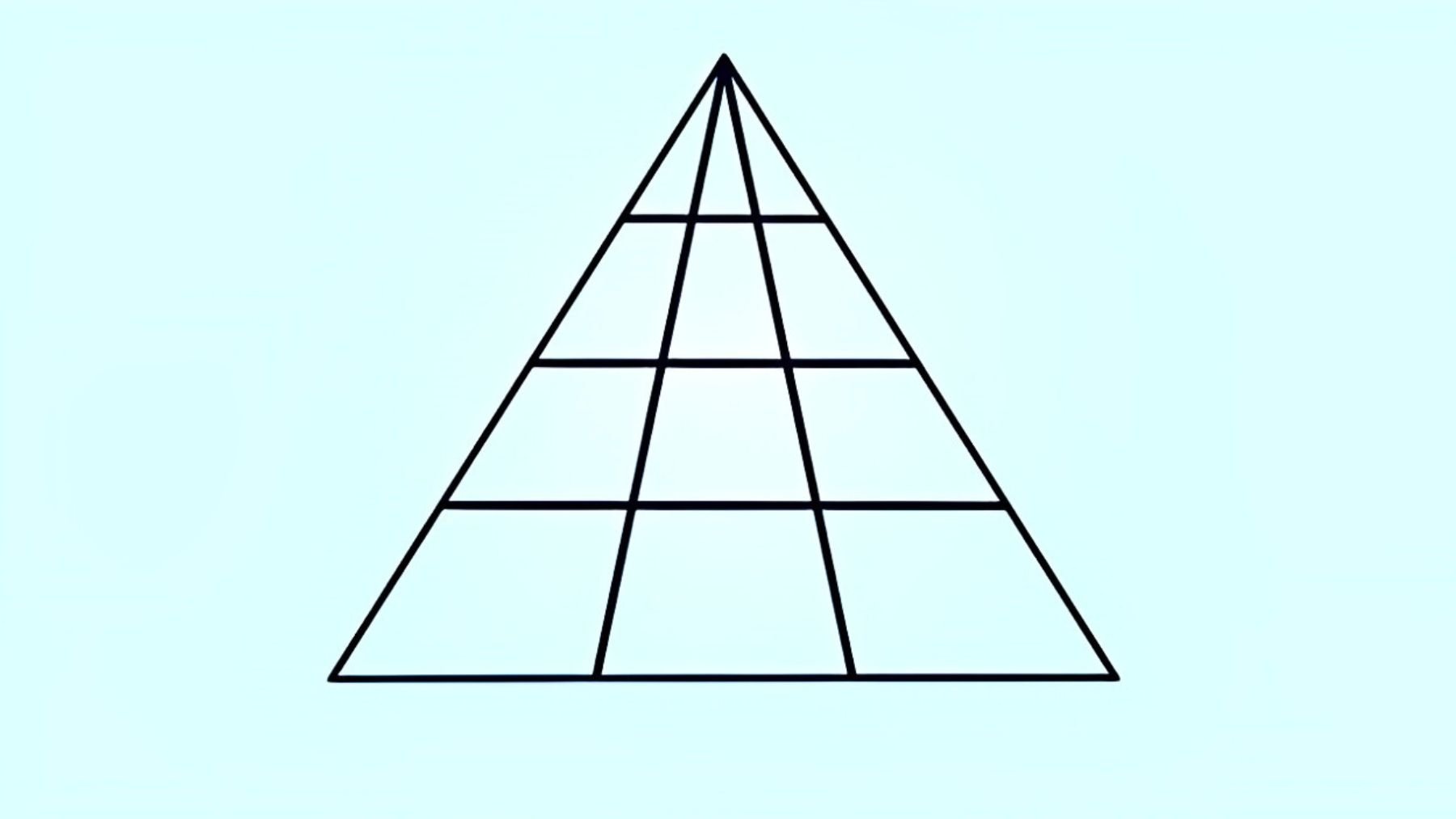Can you identify all the triangles in this geometric design? This puzzle is not the classic visual test, but a challenge that blends simplicity and depth. At first glance, it may appear as a straightforward arrangement of lines and shapes. However, many underestimate the number of overlapping and nested triangles hidden in plain sight.
The solution can offer insights into your visual intelligence and your brain’s capacity to discern patterns. We invite you to make the exercise and examine what your count might indicate about your ability to analyze visual information. Take a moment to study the image above and challenge your brain: how many triangles can you find in 10 seconds?
What this triangle test reveals about you
Visual intelligence involves how efficiently your brain interprets shapes, perceives depth, and recognizes intricate connections. In this puzzle, overlapping and nested triangles require you to mentally separate smaller from larger shapes. While most people quickly spot the obvious figures, the deeper layers are easy to overlook.
The most widely accepted solution identifies 24 triangles. This challenge evaluates your ability to mentally manipulate two-dimensional and three-dimensional figures, and also tests your cognitive flexibility. If you found the puzzle challenging, it doesn’t imply you are “bad” at puzzles; it may indicate that you initially focused on larger patterns or missed the finer details under time pressure.
What does your answer say about your visual skills
The number of triangles you count provides a glimpse into how your brain tackles visual challenges. Here is what different results might suggest:
- 6–9 triangles: You primarily detected the more conspicuous shapes and did not delve into a detailed analysis of the entire design. This suggests a big-picture cognitive style that values rapid perception over meticulous scrutiny.
- 10–18 triangles: Your approach appears balanced. You successfully identified a number of mid-sized combinations, yet may have overlooked some smaller or more subtly integrated forms. This reflects a moderate level of attention to detail.
- 19–24 triangles: Your systematic and meticulous visual analysis enabled you to recognize most of the shapes in the puzzle. This is associated with strong pattern recognition and methodical problem-solving abilities.
Don’t forget that factors such as stress, distractions, or a rushed approach can influence your results. Visual intelligence is not a fixed trait but rather a skill that can be developed and sharpened over time through practice. Engaging in puzzles like this one trains your brain to think more flexibly and see beyond the usual.
So, did your count meet your expectations? If your result differed from what you anticipated, don’t hesitate to try the puzzle again, this time without the strict 10-second limit. You may discover new patterns and surprises upon a more relaxed inspection. After all, it’s not the goal of these types of tests to arrive at the correct answer; they are about rewiring and expanding how you perceive the world.
Whether you identified every triangle or missed a few, the process of visual analysis and the way you approach details is far more significant than the number you find.

